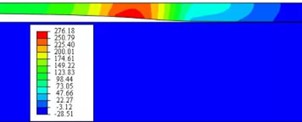Adhesion Properties of Polyvinyl-Butyral-Laminated Glass under High-Speed Loading
DOI:
https://doi.org/10.47982/cgc.9.617Downloads

Abstract
Laminated glass has been widely used as safety glass for decades owing to its remarkable post-breakage load-bearing capacity. The post-breakage behaviour of laminated glass is mainly affected by several key factors such as the interlayer property, the adhesion property of the glass-interlayer interface, and the size of glass fragments. In this study, the adhesion properties of polyvinyl butyral (PVB) laminated glass under high-speed uniaxial tension were studied by through-cracked tensile (TCT) tests. Two adhesion grades (i.e., BG-R15 medium adhesion grade and BG-R20 high adhesion grade) PVB-laminated glass and three loading rates (i.e., 0.1m/s, 0.5m/s, and 5m/s) were considered in the tests. The delamination behaviour of PVB-laminated glass was modelled using a numerical cohesive zone model (CZM) to accurately calibrate the interfacial adhesion properties. It was found that BG-R15 PVB-laminated glass exhibits a progressive delamination behaviour under high-speed loading, which results in a stable but low post-cracking force, whereas the delamination was significantly constrained for BG-R20 PVB-laminated glass, which leads to a higher post-cracking force but very poor deformability. The deformability of high adhesion grade laminated glass increases with the crack number since more PVB participates into the stretching of cracked laminated glass. The interfacial adhesion property shows a significant rate effect, with the bonding strength and energy release rate of BG-R15 PVB-laminated glass increase by nearly 25% and 50%, respectively, as the loading rate increases from 0.1m/s to 5m/s. In general, the energy dissipation capacity of the BG-R15 PVB-laminated glass is much higher than that of the BG-R20 PVB-laminated glass. This study can provide a valuable reference for the design of laminated glass under blast or impact loads.
Published
Issue
Section
Laminated Glass & Interlayer Properties
License
Copyright (c) 2024 Zhifei Chen, Xing Chen, Suwen Chen

This work is licensed under a Creative Commons Attribution 4.0 International License.



